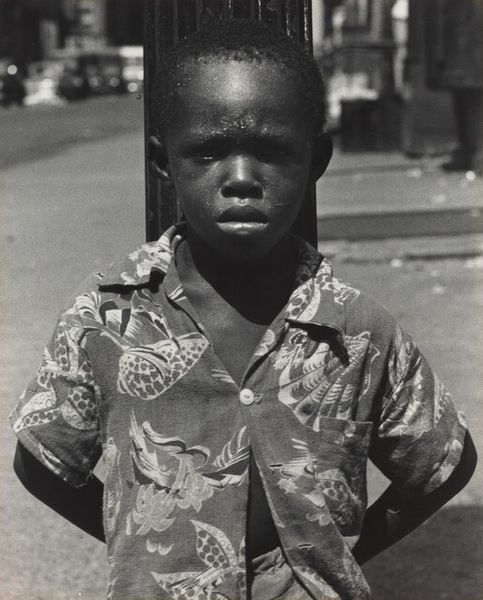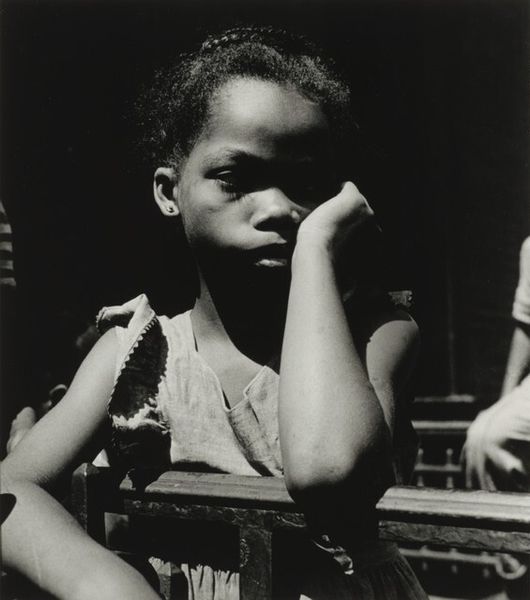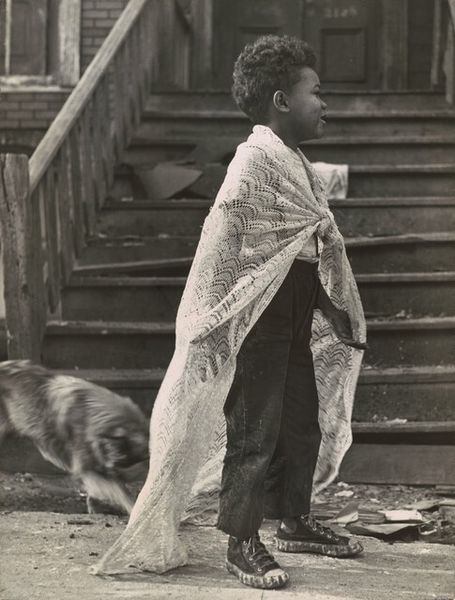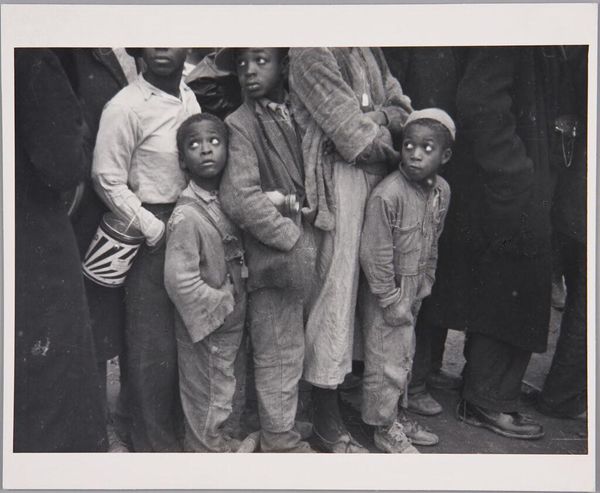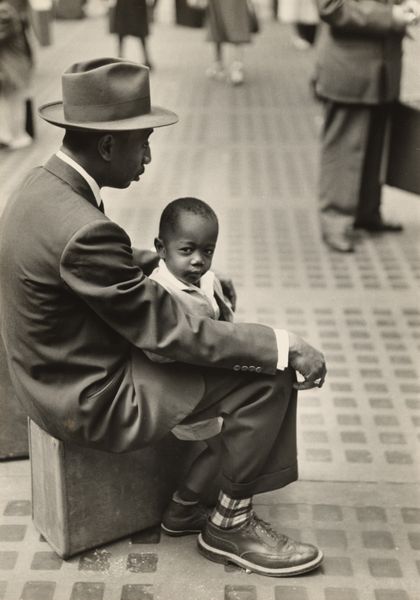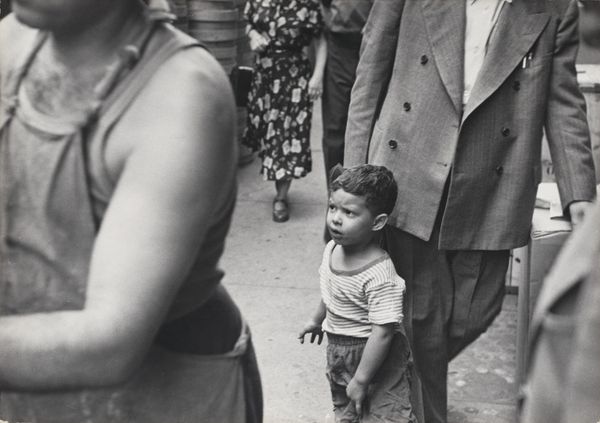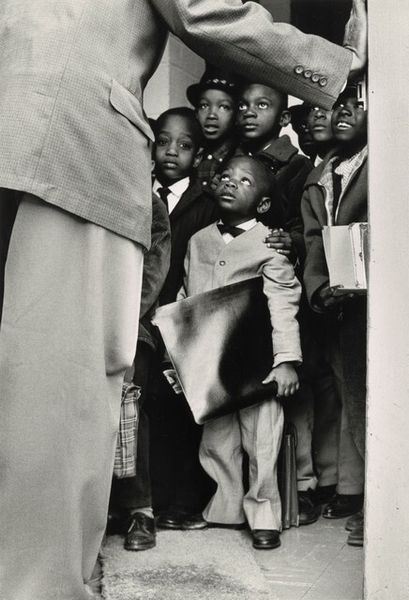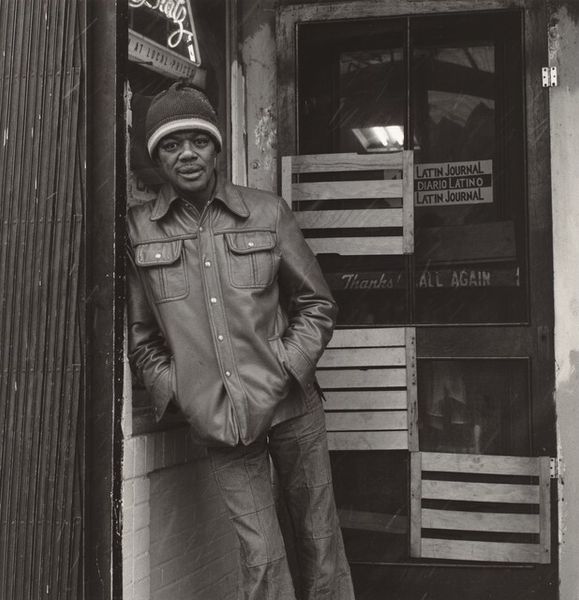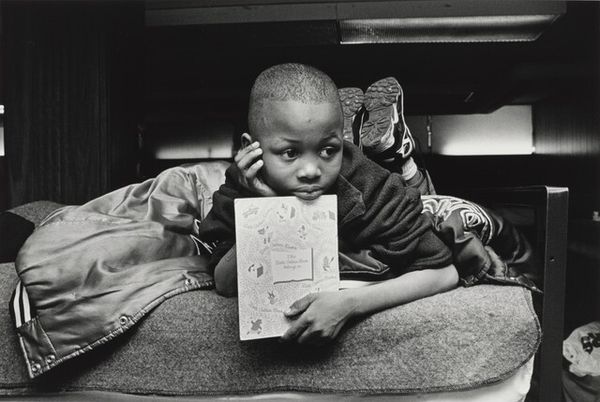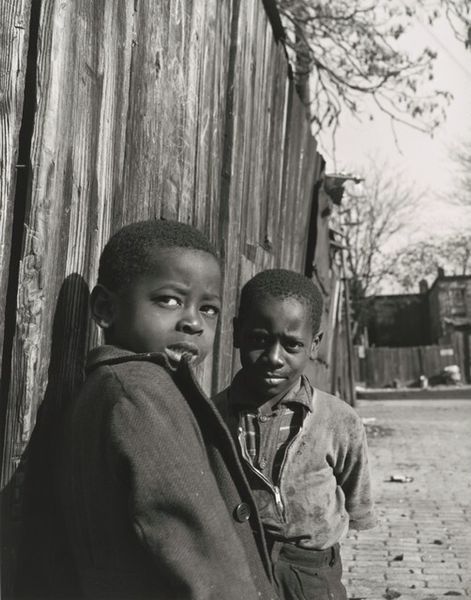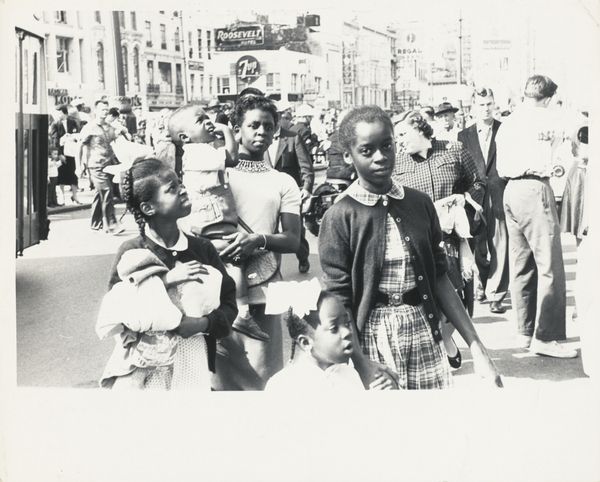
#
black and white photography
#
photo restoration
#
cool tone monochrome
#
street shot
#
black and white format
#
black and white theme
#
black and white
#
monochrome photography
#
photo record
#
monochrome
Dimensions: image: 26.7 × 26.7 cm (10 1/2 × 10 1/2 in.) sheet: 27.9 × 35.6 cm (11 × 14 in.)
Copyright: National Gallery of Art: CC0 1.0
Curator: Gordon Parks' black and white photograph, "New York, New York. A Harlem newsboy," created after 1943, really strikes a chord. It presents a young boy in Harlem, seemingly captured in a moment of quiet contemplation amidst the urban hustle. Editor: The gravity in the boy's eyes, coupled with the surrounding newsstands, evokes a powerful sense of resilience in the face of adversity. There's a lot of narrative implied here in this single moment. Curator: Exactly. Parks often used his photography to address social and political issues. He wasn't just documenting; he was actively shaping the narrative around Black life in America, pushing against mainstream portrayals. You can feel the weight of the era just by the visible texts near him. Editor: We can see the Pittsburgh Courier masthead at the top and, slightly obscured, a poster for Adam Clayton Powell, Jr.’s reporting "the Negro on the Home Front" with the caption "People's Voice, No Punches Pulled". The juxtaposition is really potent—we've got a Black newsboy literally surrounded by news relevant to his own community. He IS the news. Curator: Parks was keenly aware of the power of visual storytelling to enact social change. And here, his focus on the individual is incredibly effective in generating empathy. By placing the Black male youth at centerstage. Editor: I am moved by the decision to photograph the child at eye-level; this promotes the idea that young people should be respected and recognized as relevant within broader conversations around community and personhood. It avoids condescension and centers a Black perspective that directly engages with the audience. Curator: Looking at Parks’ work in general, he used visual imagery to show the humanity of his subjects and fight against stereotypes and this piece in particular speaks volumes. It stands as a poignant commentary on race, poverty, and the realities faced by many African American youth of that era. Editor: The boy's direct gaze and solemn expression remain long after you've left the frame. He’s telling us something with his eyes, but also acting as a larger symbol of hope, potential, and the ongoing struggle for racial justice. Curator: Ultimately, Parks challenged the existing visual regime by demonstrating the complexities of the community with care and candor. Editor: Agreed. This image compels us to confront the ongoing narratives and fight for a more equitable society, while acknowledging how much of history still impacts lives today.
Comments
No comments
Be the first to comment and join the conversation on the ultimate creative platform.
